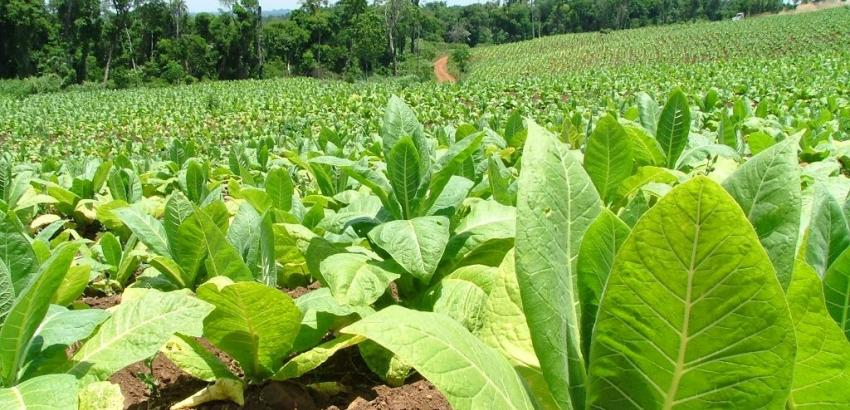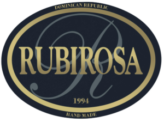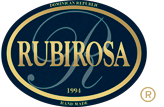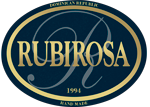
Writing a short and entertaining writing on a product whose presence dates back more than three thousand years, and which, at the same time, has had such an important impact on the economy of our country in the last five hundred years, is in itself a daring task. In any case, we are going to try to cover both concepts.
Tobacco, whose scientific name is “nicotiana tabacum”, and according to anthropological research, plant scientists have determined that the tobacco leaf originated in the Andean zone between Ecuador and Peru, the first crops date from at least three thousand years BC. At the time of colonization, tobacco use was widespread in almost all of America. The colonizers found with amazement that in addition to smoking, tobacco was sniffed through the nose, chewed, eaten, drank, smeared on the body, other research also indicates that it was used in eye drops and was used in enemas.
Tribes like the Mayans, used tobacco in religious rituals, others, in rites to blow it on the warriors prior to fighting; it was scattered in the fields before the harvests. Also, even women used it before a sexual relationship; and both men and women used it as a narcotic. As we have seen in countless movies, the famous phrase “smoking the pipe of peace” has served to seal friendship pacts and become a symbol of peace between tribes and peoples.
Historians have pointed out that they were Rodrigo de Jerez and Luis de la Torre, companions of Christopher Columbus on his first trip, the first Westerners to know of his existence. Christopher Columbus has it noted in his “First Voyage Navigation Diary” in which he recorded the first observations about tobacco. And, it was from that moment, that there was no chronicler or traveler who overlooked this strange custom and rite of blowing smoke through the mouth and nose, which was not known in the old world. All these observations not only of tobacco, but of the customs of our aborigines, were reflected in the works of Gonzalo Fernández de Oviedo and more specifically in those of Fray Bartolomé de las Casas, and his work “Apologetics Historia de las Indias”.
According to historians of the time, tobacco was introduced to Spain by the sailor Rodrigo de Jerez, but, unfortunately, he was arrested and imprisoned by the Catholic Church, during that black period of medieval history called “The Inquisition”, being accused for this, of witchcraft, under the argument that “only the devil could give the power to blow smoke through the mouth.”
The political instability in Europe (wars between Spain and France and England) of the seventeenth and eighteenth centuries which directly affected the social and economic activities on our island of Hispaniola, and with it, of course, the production and marketing of tobacco, which together with wood and skins (hides) they became the most important support of the economy of those times.
As we will see later, I consider that from the so-called discovery to independence, and even after it, there was no other island in the Caribbean and the continental territory of America, more attacked and assaulted, vilified and outraged than ours. Not only by all the great powers of that time, Spain, France, the United States, but also by buccaneers and filibusters, and even by an Englishman whose robberies and assaults on our island were awarded by the English crown, granting him nothing more and nothing less. Than Sir’s title, that was Francis Drake. All this in addition to the Haitian domination for 22 years. These constant aggressions and subjugations were the cause, in my opinion, of the misfortunes that caused the backwardness and poverty on the island of Santo Domingo compared to other islands in the Caribbean. Since, without political and social stability, there could be no concentration for investment, production and wealth.
So there was no peace and quiet for the island of Santo Domingo in almost four centuries. Tobacco, as one of the sources of production and jobs that the island of Santo Domingo had, has had, like the Greek theater, its laughter and its cries.
During the 17th century, tobacco cultivation was seriously affected by the well-known depopulations and devastations ordered by the crown and carried out by Governor Osorio in 1605 and 1606, which eliminated many tobacco crops. And, to further disgrace the fate of the inhabitants of the eastern part of Hispaniola, a royal provision was issued prohibiting the cultivation of tobacco. They were times of hardship and deep misery, in a period that historians have called “Fool Spain”. Although the economy was severely deteriorated, tobacco continued to be produced and smuggled with the English, Dutch and French and, with our neighbors, after the establishment of Saint-Domingue in the western part of the island, following the Treaty of Ryswick in 1697.
A new apogee for tobacco had from the 18th century, specifically on October 12, 1763, in which, by means of a Royal Order, a tobacco factory was created in the colony. It is through this order that it is understood that our colony, as well as Cuba, Mexico, Venezuela and Peru, were going to supply branch tobacco to Spain, specifically in Seville where they were to be converted into cigars. By 1771 it was reported that the Santo Domingo factory supplied 60,000 pounds of branch tobacco.
But again the political events in Europe affected the colony of the island of Santo Domingo. Wars broke out between Spain and France, and with the victory of the latter, the Treaty of Basel was signed in 1795, which put the entire island in the hands of France, immediately causing the break with the Spanish suppliers in Seville, and, of course, , a noticeable drop in the production and marketing of tobacco, and with this, unemployment and the increase in poverty.
Years later, we had the domination by Haiti, a country that obtained its independence from France in 1804, being the first independence of America, after that of the United States. During that period of Haitian rule, tobacco cultivation increased like never before. According to the historical data indicated by Dr. Franklin Franco in the book Economic and Financial History of the DR, in 1841, tobacco exports amounted to $ 3,219,690, an impressive amount, since it exceeded exports made by more than twenty times. in the colonial period between 1810 and 1822.
An economic penalty established by France, which forced the newly created Haitian State to pay 150 million francs for properties lost by French settlers, led President Boyer to establish, among other provisions, a convulsive tax system that the Dominicans understood unfair and abusive, a fact that added to other decisions, such as the Rural Code, caused a general discontent that was used by Duarte and the Trinidadians to prepare the clarion of independence on February 27, 1844.
The events derived from the struggle for independence caused a shortage of labor, since a good part of the men from the countryside had to join the battalions for the independence struggle. This affected many productive activities, among them, the planting and commercialization of tobacco, although to a lesser extent than other lines, since the most important battles were in the southern region (Battle of Santomé; the Battle of March 19 in Azua).
As of independence, tobacco continued its development, and although tobacco was planted in much of the national territory, it was in Cibao, specifically in La Vega and Santiago, where the highest quantity and quality was produced. It also had another characteristic, that in the cultivation and production of tobacco family and artisan groups were involved, making this a “more equitable and participatory distribution of wealth.” According to Juan Bosch, in his book “Dominican Social Composition”, it was the tobacco producers and their production and marketing characteristics that created the first groups that would make up the nascent Dominican petty bourgeoisie.
Another tragic event for our country, the annexation to Spain, brought with it new restrictions and control over tobacco production. But an unfortunate information that began to run in that period of Spanish rule, indicated that they thought to reintroduce slavery in our country. All this state of restlessness and unease caused the Restoration movement to explode, which was sponsored and financed by the power groups in Santiago and the surrounding areas, among them the tobacco growers and andulleros, who saw their condition as petty bourgeois threatened, such as Bosch points out.
Such was the importance and transcendence of tobacco in Dominican society that it was described by Pedro Francisco Bonó in his “Notes on the Dominican working classes” (1881). Bonó pointed out that tobacco was the basis of our infantile democracy because of the balance in which it maintained the fortunes of individuals. Bonó, who was called the “intellectual of the poor”, asserted that tobacco was the engine of small agriculture and this in turn was one of the mainstays of our economic development.
Among the smoking presidents we have Pedro Santana, who smoked a kind of andullo and stinging tobacco in a pipe or hookah. And President Ulises Heureaux (Lilís), who smoked cigars, both national and Cuban.
By the turn of the twentieth century, there were several tobacco factories, among the main ones were “La Aurora”, a private company founded in 1903 by Don Eduardo León Jimenes, which in a few years had about 100 cigar makers; The Compañía Anónima Tabacalera, founded on June 25, 1914 and which was, for many years, the largest tobacco and cigarette company in the country, having 200 cigar makers in the beginning. There was also the tobacco company “El Gallo” which had about thirty cigarette manufacturers.
Regarding the export of cigars, the Dominican Republic was not an important exporter in 1966. It is with the triumph of the Cuban revolution and establishment of the communist regime in Cuba, that the most important brands of cigars were established in 1970, and With this they create a new mystique in the production of cigars, with new blends of cigars, foreign capes and capes and a rigorous quality control. As well as, a variety of vitolas and the establishment of a new concept in the marketing of fine cigars.
These new brands, which were produced under the free zone regime, were initially not available on the national market. Later, marketing was allowed throughout the territory and taking advantage of the new industry that was developing: tourism.
However, Dominican producers had another onslaught that made the planting, production and sale of tobacco for exports decrease and stagger, when in the government of Dr. Salvador Jorge Blanco (1982-1986) a tax of 36% was imposed on exports of coffee, sugar, cocoa and, of course, tobacco, due to the “good prices” that were available at the time in international markets. This perversity against the producers was completely dismantled by the government of President Joaquín Balaguer (1986-1990).
As we said before, it is in the late sixties when the main factories of foreign brands were established in the country, all this brought new technologies and knowledge for the manufacture of cigars, and looking back, it is fair and timely to point out That the entry of all these factories “woke up” the national tobacco industry, since they visualized the potential of the quality of the Dominican cigar in foreign markets and the creation of a market in the country.
The most impressive thing that can be shown is that if we take into account that by the 70s our country almost did not export any tobacco and that, by 1994, that is, only twenty-four years later, the Dominican Republic became in the world’s largest exporter of handmade cigars: (90) ninety million units compared to (55) fifty-five million in Cuba. By 2009 we exported close to three hundred and fifty million cigars, by far the largest tobacco producer in the world.
This has developed a large number of artisans, sellers and specialists in tobacco of different classes who live and have developed thanks to the manufacture of tobacco, impacting economically in a positive way in many towns and regions.
Thanks to all this growth, a tobacco culture has developed that has allowed research to continue to improve the country’s tobacco. But in addition, plantations are under development to produce the cigar wrapper, which are mostly imported from Ecuador, Connecticut and Cameroon. So, let’s not be surprised if in the near future we have the Dominican cape among the most select in the world.
Meanwhile, sit back in your best chair and light a good Dominican cigar, accompanied by your favorite drink.


